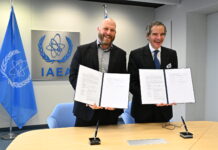Celebrating Holidays Aboard the International Space Station: A Journey Through Time
The International Space Station (ISS) serves as a remarkable convergence of science, technology, and human ingenuity, orbiting approximately 250 miles above Earth. Over the years, astronauts have celebrated numerous holidays in space, creating unique traditions while continuing vital research and maintenance work. This article explores the rich history of holiday celebrations in space, from the historic Apollo 8 mission to the ISS’s current Expedition 72 crew.
A Glimpse Back: The Early Days of Space Celebrations
The tradition of celebrating holidays in space began with the Apollo 8 mission in December 1968. Astronauts Frank Borman, James Lovell, and William Anders were the first to spend Christmas away from Earth, orbiting the Moon. On Christmas Eve, they commemorated the occasion by reading the opening verses from the Bible’s Book of Genesis, sharing breathtaking images of the lunar surface with an estimated one billion people across 64 countries. This broadcast left an indelible mark on history, showcasing the unique blend of exploration and human connection.
In 1973, the Skylab 4 mission further solidified holiday celebrations in space. Astronauts Gerald Carr, Edward Gibson, and William Pogue were the first to spend Thanksgiving, Christmas, and New Year’s in orbit. Displaying creativity and resourcefulness, the crew crafted a homemade Christmas tree using leftover food containers, decorated with colorful decals, and topped with a cardboard cutout shaped like a comet. Their festivities included a spacewalk to observe Comet Kohoutek and a holiday dinner with fruitcake, followed by communication with their families back on Earth.
Holidays on the Space Shuttle and Beyond
Fast forward to the 1990s, when NASA launched the Hubble Space Telescope into Earth’s orbit. In 1993, during the STS-61 servicing mission, astronaut Jeffrey Hoffman celebrated Hanukkah in space, complete with a traveling menorah and dreidel. This marked another milestone in the tradition of observing holidays while advancing scientific endeavors.
In 1999, the STS-103 crew celebrated the first space shuttle Christmas aboard the Discovery. Astronauts Curtis Brown, Scott Kelly, Steven Smith, John Grunsfeld, Michael Foale, and European Space Agency (ESA) astronauts Jean-François Clervoy and Claude Nicollier enjoyed a festive meal of duck foie gras on Mexican tortillas, cassoulet, and salted pork with lentils. Smith and Grunsfeld conducted a spacewalk on Christmas Eve to repair the Hubble Telescope, ensuring its continued contribution to astronomical discoveries. From that year onward, at least one American astronaut has celebrated Christmas in space annually.
The Continuous Presence of Humanity in Space
The arrival of Expedition 1 crew members in November 2000 marked a significant milestone in space exploration. NASA astronaut William Shepherd and Roscosmos cosmonauts Yuri Gidzenko and Sergei Krikalev became the first to celebrate the holiday season aboard the ISS. They established a tradition of reading a goodwill message to those on Earth, with Shepherd honoring a naval custom by composing a poem as the first entry of the new year’s log. This momentous event laid the foundation for a continuous human presence in space, which has persisted for over 24 years.
As NASA continues to support missions to and from the ISS, astronauts have learned to live and work in space for extended periods, adapting their holiday traditions to the unique environment of the space station. These celebrations serve as a reminder of the enduring human spirit and the ability to find joy and connection, even in the vastness of space.
Modern Celebrations Aboard the ISS
The current Expedition 72 crew continues the tradition of celebrating holidays in space. Flight engineer Jasmin Moghbeli’s family contributed to the festivities by crafting a felt menorah for her Hanukkah celebration. Given the constraints of space travel, astronauts use innovative methods to adapt holiday traditions. Moghbeli pinned felt "lights" to represent each night of the eight-day holiday, while a dreidel spun weightlessly, unable to settle on one of its four faces. The Expedition 72 crew also recorded a holiday message for those back on Earth, further bridging the gap between space and home.
The Role of the ISS: A Platform for Science and Exploration
The International Space Station serves as a crucial platform for scientific research and technological development. It facilitates experiments that are impossible to conduct on Earth, contributing to our understanding of various fields, including biology, physics, and materials science. The ISS is also a pivotal stepping stone for developing a low Earth economy and preparing for NASA’s ambitious future missions, such as the Artemis program, which aims to return humans to the Moon and eventually explore Mars.
As astronauts celebrate holidays in space, they do so while advancing humanity’s scientific knowledge and exploration capabilities. The ISS exemplifies the power of international collaboration, bringing together space agencies and experts from around the world to push the boundaries of what is possible.
Conclusion: A Legacy of Celebration and Exploration
The history of holiday celebrations in space is a testament to the resilience and adaptability of astronauts who venture beyond Earth’s confines. From the Apollo missions to the continuous presence aboard the ISS, these celebrations highlight the human capacity for joy, connection, and creativity, even in the most challenging environments.
For those interested in exploring more holiday memories aboard the ISS, NASA provides a wealth of resources and information. These accounts offer a glimpse into the lives of astronauts who have made space their temporary home, celebrating traditions while contributing to the advancement of science and exploration.
To learn more about the International Space Station, its ongoing research, and its dedicated crew members, visit NASA’s official website at https://www.nasa.gov/station.
For more Information, Refer to this article.



































